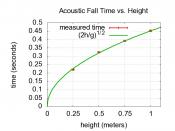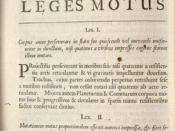Aim
Investigation of a simple pulley system through comparison of experimental and theoretical models.
Introduction
The motion and mechanics of a pulley system all behave according to Newtonian mechanics. In theory, all moving objects should adhere to Newton's laws of motion - and so from equations derived from these laws, we can get a mathematical model which allows us to predict the motion of the object. One of the main objectives of this investigation is to find out how similar experimental data is to this model, at the same time accounting for any variation in the results.
A simple pulley
Assumptions
Before conducting any experiments, or considering any models, there are assumptions that need to be made about both methods.
To greatly simplify results from experimental data, I will assume there is a constant acceleration on the system. This means I am able to use equations derived from velocity and time equations.
In this case I will be able to use the equation :
s = ut + ýat"
Another important factor is friction in the system. I have not factored in an expression for friction in the model, and I have tried to minimise its effect on experimental data by ensuring I have a smooth, clean pulley.
I have taken the weight of the string, as well as other components attached to it as negligible compared to the overall weight of the system, and I have assumed the string is inextensible.
I would consider the above three points as potentially having the most impact on both experiment and model. Other less important factors are effects such as air resistance - which should be negligible, and considering the weights as moving particles (with mass but no size).
How do all these factors affect the two sets of results ?...


